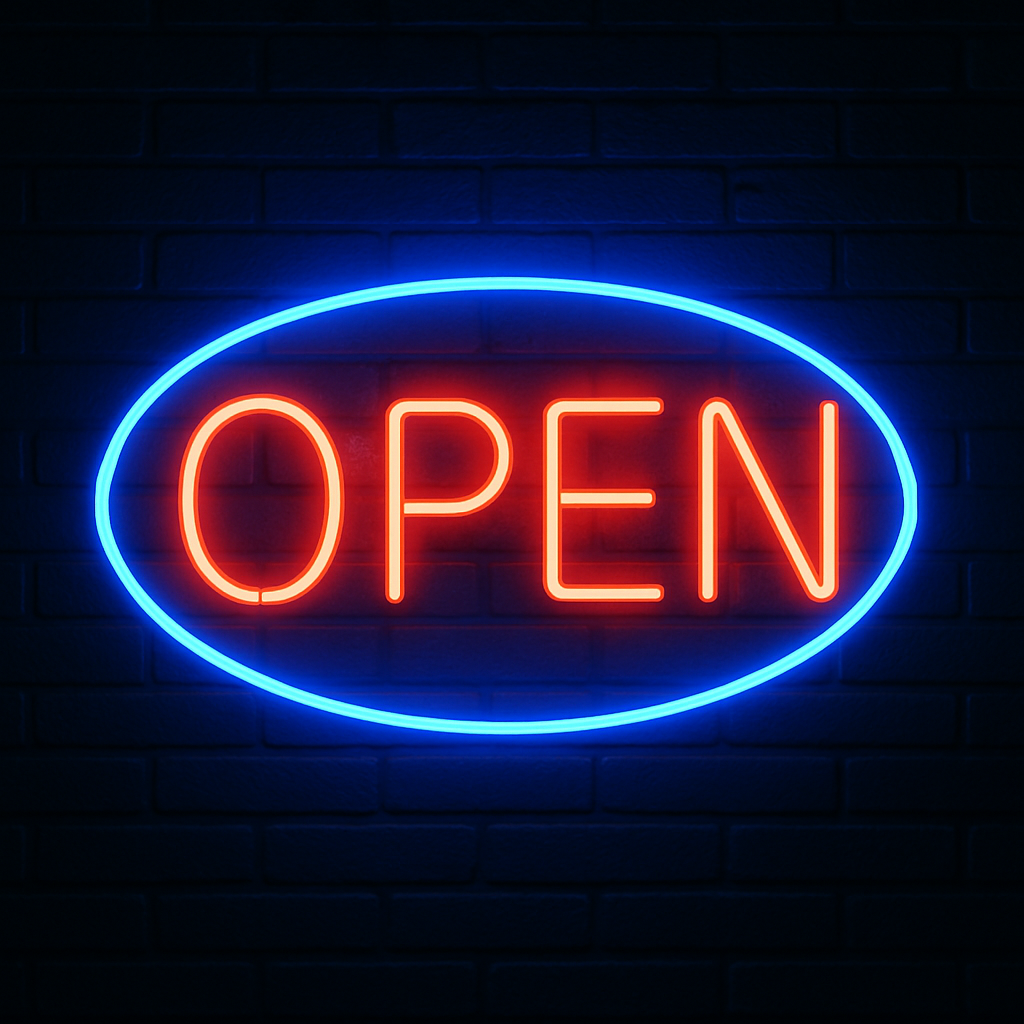Time:2025-10-13
The humble "Open" sign is something we see every day, yet rarely give much thought to. These signs are a staple in business windows, signaling to passersby that a business is ready to serve customers. But have you ever wondered about the history and evolution of the open sign? Let's explore how this simple yet crucial sign has evolved over time and why it remains vital for businesses today.
The concept of signaling an establishment's operational status dates back centuries. In ancient marketplaces, merchants would physically open their stalls to indicate readiness for business. With the advent of physical storefronts, something more explicit was needed to capture a passerby's attention.
The traditional open sign as we know it began to take shape in the late 19th and early 20th centuries. Hand-painted signs were the norm, often crafted by local artisans. These signs not only announced that a business was open but also served as an advertisement, showcasing the shop's personality and style.
With the rise of industrialization, signs began to be mass-produced, allowing for wider distribution and uniformity. This shift made it easier for businesses to obtain signs quickly and economically.

The 20th century brought about significant changes in the design and functionality of open signs. Neon lights, introduced in the 1920s, revolutionized signage. Neon open signs became incredibly popular due to their visibility and the ability to attract attention even in the dark. The bright glow of neon signs became synonymous with night-time commerce, beckoning customers from afar.
Neon signs weren't just about being visible; they were about making a statement. They became a symbol of modernity and progress. For many businesses, a neon open sign was a must-have to stand out in crowded urban landscapes. The vibrant colors and customizability made neon a favorite among businesses looking to make an impact.
As technology advanced, so did the open sign. The late 20th and early 21st centuries saw the rise of digital and LED signs. These signs offered several advantages over their predecessors. They were more energy-efficient than neon, could display messages dynamically, and were more durable.
The introduction of LED technology allowed businesses to display not just an "Open" message, but also other messages and graphics. This adaptability meant businesses could convey more information to potential customers, such as special promotions or business hours.
Digital signs also allowed for remote updating, meaning businesses could change their messaging in real-time without the need for physical intervention. This flexibility is particularly useful for businesses with changing hours or for those wanting to highlight different messages throughout the day.

Today, the open sign is a blend of tradition and technology. While many businesses still favor the classic look, incorporating modern technology is becoming increasingly popular. From vintage-style signs with a modern twist to high-tech digital displays, there's an open sign to fit every business's aesthetic and functional needs.
Despite advancements in technology and changes in consumer behavior, the open sign remains a crucial aspect of business operations. Here's why:
Immediate Recognition: An open sign quickly communicates to potential customers that your business is ready for service.
Branding: Custom signs can reflect your brand's personality and values, offering a glimpse into what customers can expect inside.
Visibility: An effective sign can capture the attention of foot traffic, drawing in potential customers who might otherwise walk by.
With the digital age, the concept of being "open" has expanded beyond physical storefronts. Online stores now use digital "open" signs in the form of banners and notifications to indicate when they are actively engaging with customers, such as during live chat sessions or special promotions.
As technology continues to evolve, so too will the open sign. We can expect to see more integration with smart technologies, such as signs that adjust based on time of day, weather, or special events. The rise of augmented reality could also lead to interactive signs that offer a more immersive experience for potential customers.
The open sign has come a long way from its humble beginnings as a simple hand-painted board. Its evolution mirrors broader changes in technology and consumer behavior. As businesses continue to adapt to an ever-changing landscape, the open sign will remain a vital tool for attracting and engaging customers.
Whether it’s a classic neon glow or a cutting-edge digital display, the open sign serves as a beacon for commerce, welcoming customers and inviting them to explore what lies beyond the door. As we move forward, it will be exciting to see how this essential business tool continues to evolve.